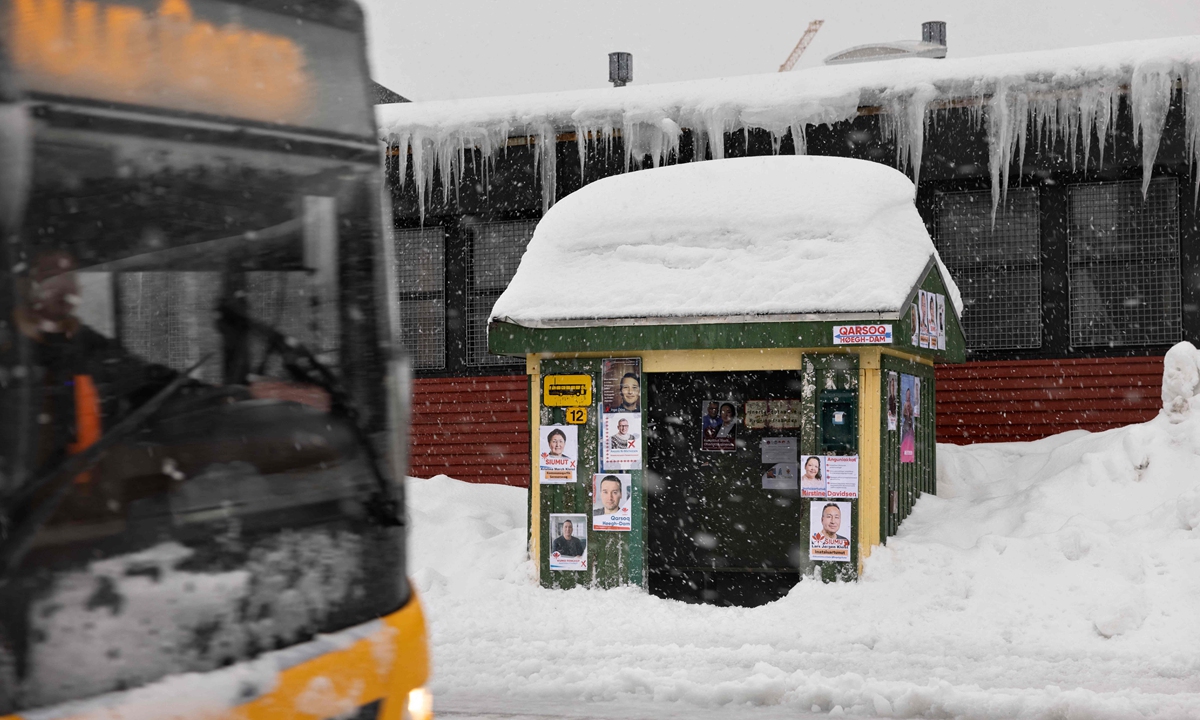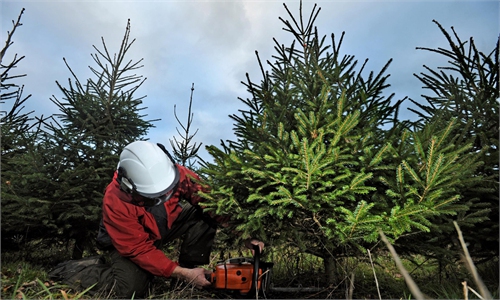Global warming trend to continue over next 5 years: WMO
‘Inexorably closer’ to tipping point
There is now a 40 percent chance that global temperatures will temporarily reach 1.5 C above pre-industrial levels in the next five years - and these odds are rising, a UN report said on Wednesday.

The Paris Accord target looks at temperature over a 30-year average, rather than a single year. But it does underscore that "we are getting measurably and inexorably closer" to that threshold, said UN World Meteorological Organization (WMO) Secretary-General Petteri Taalas in a statement. Taalas described the study as "yet another wake-up call" to slash high greenhouse gas emissions.
Every year from 2021 through 2025 is likely to be at least 1 C warmer, according to the study. The report also predicts a 90 percent chance that at least one of those years will become the warmest year on record, topping 2016 temperatures. In 2020 - one of the three warmest years on record - the global average temperature was 1.2 C above the pre-industrial baseline, according to an April WMO report.
"There's a little bit of up and down in the annual temperatures," said Gavin Schmidt, director of NASA's Goddard Institute for Space Studies in New York City. "But these long-term trends are unrelenting."
"It seems inevitable that we're going to cross these boundaries," Schmidt said, "and that's because there are delays in the system, there is inertia in the system, and we haven't really made a big cut to global emissions as yet."
Almost all regions are likely to be warmer in the next five years than in the recent past, the WMO said.
The WMO uses temperature data from multiple sources including NASA and the National Oceanic and Atmospheric Administration (NOAA).
Weather that was once unusual is now becoming typical. Earlier in May, for example, NOAA released its updated "climate normals," which provide baseline data on temperature and other climate measures across the US. The new normals - updated every 10 years - showed that baseline temperatures across the US are overwhelmingly higher compared with the past decade.
Temperatures shifts are occurring both on average and in temperature extremes, said Russell Vose, chief of the climatic analysis and synthesis branch at NOAA's National Centers for Environmental Information. Over the next five years, these extremes are "more likely what people will notice and remember," he said.

Campaign Posters for Greenland's legislative elections hang on a bus shed in the center of Nuuk, Nuuk, Greenland, on April 4. Photo: VCG
This does not yet mean that the world would already be crossing the long-term warming 1.5-degree threshold set by the Paris Climate Accord, which scientists warn is the ceiling to avoid the most catastrophic effects of climate change.The Paris Accord target looks at temperature over a 30-year average, rather than a single year. But it does underscore that "we are getting measurably and inexorably closer" to that threshold, said UN World Meteorological Organization (WMO) Secretary-General Petteri Taalas in a statement. Taalas described the study as "yet another wake-up call" to slash high greenhouse gas emissions.
Every year from 2021 through 2025 is likely to be at least 1 C warmer, according to the study. The report also predicts a 90 percent chance that at least one of those years will become the warmest year on record, topping 2016 temperatures. In 2020 - one of the three warmest years on record - the global average temperature was 1.2 C above the pre-industrial baseline, according to an April WMO report.
"There's a little bit of up and down in the annual temperatures," said Gavin Schmidt, director of NASA's Goddard Institute for Space Studies in New York City. "But these long-term trends are unrelenting."
"It seems inevitable that we're going to cross these boundaries," Schmidt said, "and that's because there are delays in the system, there is inertia in the system, and we haven't really made a big cut to global emissions as yet."
Almost all regions are likely to be warmer in the next five years than in the recent past, the WMO said.
The WMO uses temperature data from multiple sources including NASA and the National Oceanic and Atmospheric Administration (NOAA).
Weather that was once unusual is now becoming typical. Earlier in May, for example, NOAA released its updated "climate normals," which provide baseline data on temperature and other climate measures across the US. The new normals - updated every 10 years - showed that baseline temperatures across the US are overwhelmingly higher compared with the past decade.
Temperatures shifts are occurring both on average and in temperature extremes, said Russell Vose, chief of the climatic analysis and synthesis branch at NOAA's National Centers for Environmental Information. Over the next five years, these extremes are "more likely what people will notice and remember," he said.




